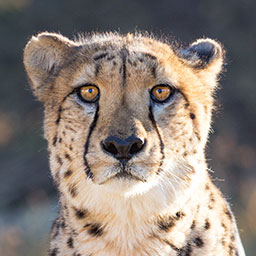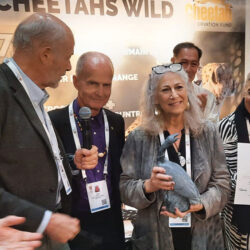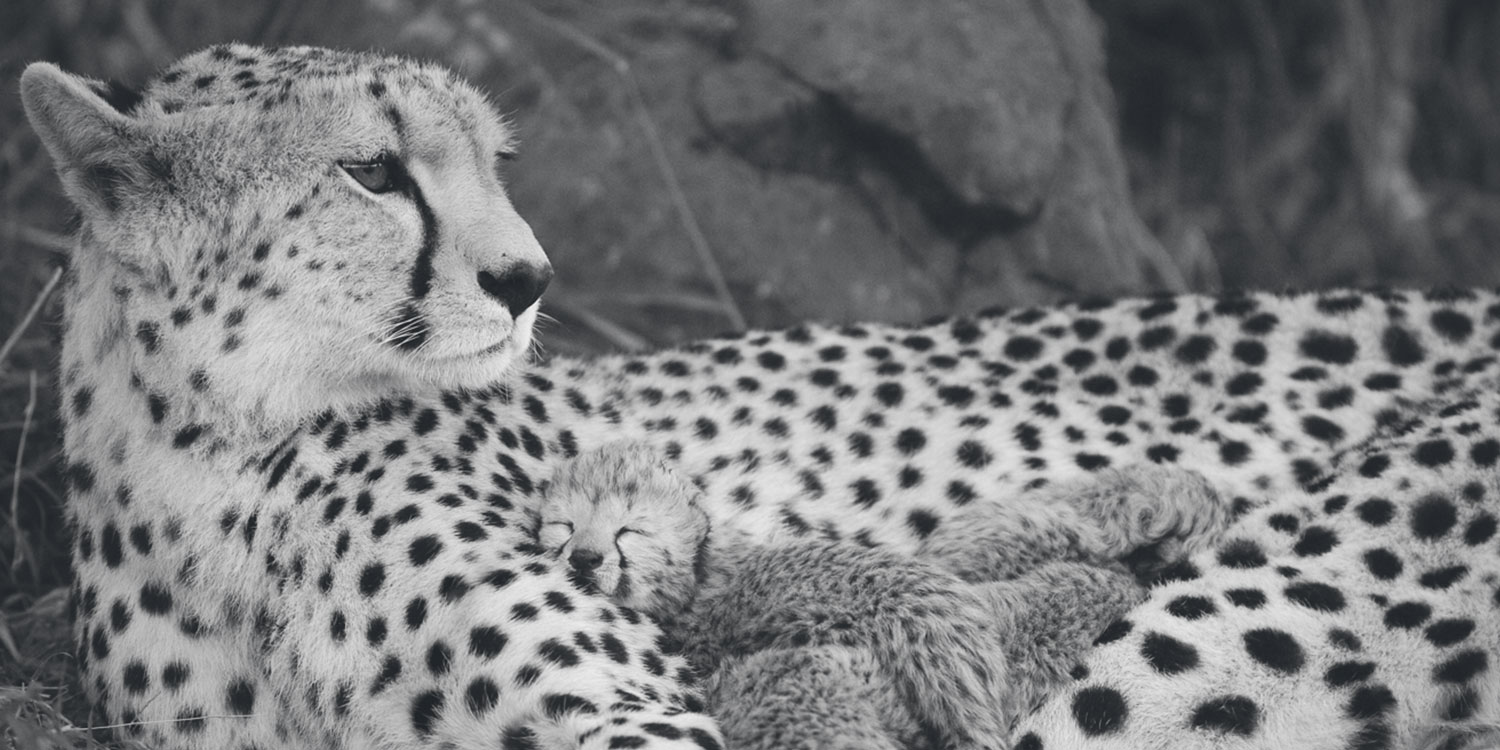Cheetah Conservation Fund and Somaliland Ministry of Environment and Climate Change Hold Community Based Natural Resource Management Workshop
-

- by CCF Staff February 20, 2023

HARGEISA, Somaliland (20 February 2023) – Cheetah Conservation Fund (CCF) and its longtime partner, the Ministry of Environment and Climate Change (MoECC), hosted a workshop on February 12 and 13 to consider how Community Based Natural Resource Management (CBNRM) and Communal Conservancies can help rural communities and cheetahs coexist in Somaliland. The two-day event brought together stakeholders representing government, civil service organizations, and rural communities to discuss how these two strategies can be applied to reduce criminal activity around wildlife in areas where cheetah trafficking is known to occur. The workshop included a discussion of factors like climate change, overgrazing of rangelands leading to desertification of landscapes, and community perceptions.
The conference was opened by Director General for MoECC, Mohamed Abdilahi Duale, with welcome comments by Abdirashid Ibrahim Abdirahman, Director General for the Ministry of Trade and Tourism. Hon. Shukri H. Ismail, Minister of Environment and Climate Change gave the opening speech and discussed her time in Namibia. Dr. Laurie Marker, Founder and Executive Director, of Cheetah Conservation Fund, gave a brief overview of CBNRM and background to the workshop and introduced the facilitators, CBNRM experts Brian Jones from Namibia and Fiesta Warwina of Kenya. They detailed Namibian and Kenyan CBNRM models. Dr. Marker showed a video and shared experiences from MoECC-led government delegation tours of Namibia (July-Aug 2022) and Kenya (Dec 2022).
The goal of both tours was to transfer institutional knowledge and experience about CBNRM, eco-tourism, and the development of concessions around protected areas. The Somaliland government is developing its own model to meet the needs of nomadic pastoral communities while mitigating threats to wildlife, with a focus on the cheetah.
“Namibian and Kenyan conservancy models and systems of national parks and protected areas serve as inspiration to help stop the illegal wildlife trade. Like Somaliland, Namibia, and Kenya have rugged terrain, arid climates, suffer from drought, and all have wild cheetah populations that come in conflict with rural communities,” said Dr. Marker.

CCF, with partner MoECC, has been making tremendous inroads in the fight against cheetah trafficking over the past decade, both in Somaliland and the greater Horn of Africa region. Building upon the success of confiscations, arrests, and community awareness campaigns from the past four years, CCF and MoECC are launching wild cheetah population research and conservation activities aimed at helping communities. To further support an increase in livelihood options, CCF is introducing its popular wildlife coexistence training for pastoralists, Future Farmers of Africa, in Somaliland communities where cheetah trafficking and human-wildlife conflict cases are concentrated.
One of the main goals of the CBNRM Workshop was to identify and critically assess potential sites for Communal Conservancies in areas where most cheetah trafficking occurs. Communal Conservancies are local voluntary governance structures that safeguard natural resources while generating revenue streams from ecotourism and other landscape activities that benefit residents.
CBNRM is not an entirely new concept for Somaliland. The Somaliland National Strategy for Decentralized Natural Resource Management (DNRM) was drafted in 2016 to address critical priorities like stabilizing rural communities severely impacted by drought; addressing livestock health and livestock predation; increasing community resiliency, and creating systems for rural governance. DNRM and CBNRM are two terms describing essentially the same concept, but with the latter emphasizing the development of ancillary revenue streams.
Participants were engaged to discuss how cultural, environmental, and economic factors would impact the formation of a Communal Conservancy. As a group, they identified the location, management structure, and long-term revenue streams that could make the Conservancies sustainable. They also looked at potential conflicts in land use. By the conclusion of the workshop, the stakeholders set forth a list of proposed sites for the pilot conservancies, along with a list of key CBNRM objectives, activities, and strategies. CCF, MoECC, and the international CBNRM consultants will review the findings and deliver a report in 60 days.
The workshop and the 2022 tours of Namibia and Kenya were sponsored by the International Union for Conservation of Nature’s Save our Species (IUCN-SOS) initiative.
By visiting different sites and learning from different models, the Somaliland delegations gained an understanding of the different ways to approach community-based conservation. In Namibia, representatives from the Somaliland government learned about Namibian conservation policies and about the daily operation of CCF’s world-renown Centre in Otjiwarongo. The Somaliland delegation also visited Erinidi Private Wildlife Reserve, Etosha National Park, Twyfelfontein, conservancies in the Kunene region, and the CCF Centre. They met with representatives from the Namibian government, a conservation NGO consortium, NACSO, and trade groups in Windhoek. In Kenya, the delegation visited Amboseli National Park, Tawi Conservancy, Kalama Conservancy, the Save The Elephants Camp in Samburu Game Reserve the BigLife Foundation (BLF) Headquarters, and the Northern Rangeland Trust.
The Namibian Association of CBNRM Support Organisations (NACSO) consists of nine Namibian civil society organisations that work together to support, promote and strengthen community-based natural resource management. Since its founding in the 1990s, NACSO has played a key role in the development of Namibia’s CBNRM programme, which today has expanded to deliver a growing suite of critical conservation, rural development, tourism investment, and economic diversification functions. CCF and MoECC are developing a similar umbrella organization for Somaliland stakeholders, the Somaliland Association of Community-Based Natural Resource Management Support Organizations (SACSO), which was discussed at the workshop. The first SACSO meeting was held in December 2022, with CCF organizing stakeholders to support MoECC with CBNRM.
Cheetahs, listed as an Appendix 1 species under Convention for International Trade in Endangered Species (CITES), are illegally removed from the wild in the Horn of Africa to supply the illegal pet trade. Since 2011, CCF has been assisting the government of Somaliland in caring for cheetahs intercepted by traffickers. CCF currently cares for 92 cheetah cubs in Somaliland’s capital city of Hargeisa. In December 2021, CCF and Somaliland’s sponsoring partner, the Ministry of Environment and Climate Change (MoECC), began construction of the CCF Cheetah Rescue and Conservation Centre (CRCC) at Geed-Deeble (“Land of Trees”) to provide a more suitable and natural home for the animals. CCF expects to complete the Phase One facility and move the cheetahs to the new facilities by the second quarter of 2023.


The workshop attendees heard from participants in both trips as well as guest speakers and experts in the field of community-based natural resource management from Namibia and Kenya.

# # #
About CCF
Cheetah Conservation Fund (CCF) is the global leader in the research and conservation of cheetahs and is dedicated to saving the cheetah in the wild. CCF has created a set of integrated programmes based on its research to address threats to the cheetah and its ecosystem. Founded in 1990, CCF is an international non-profit organisation headquartered in Namibia with a field base in Somaliland. CCF will celebrate its 33rd anniversary in 2023, making it the longest-running and most successful cheetah conservation organisation. For more information, please visit www.cheetah.org
Related Reading


